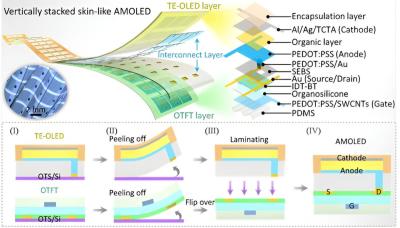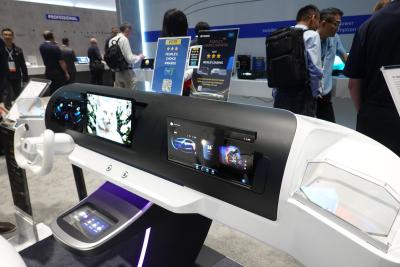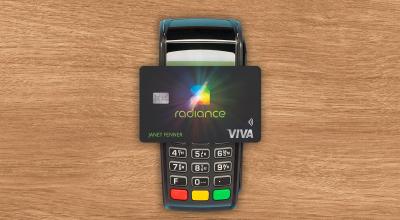Flexible OLEDs: introduction and market status - Page 2
Hongqi launches the 2025 Guoya luxury sedan, with the first sliding automotive OLED display
China's Hongqi launched its latest luxury executive sedan, the Guoya (国雅), as part of the Hongqi Golden Sunflower series. The model was previously known as the HongqiL1.
The Hongqi Guoya adopts a 14.2" rollable (sliding) AMOLED display for the center multimedia display. This is the first time such an automotive sliding AMOLED display is produced commercially (and the only second rollable screen following LG's 2020 rollable 65" OLED TV which is now discontinued). The AMOLED display is produced by Visionox, and we know that it adopts an Ultra-Thin-Glass cover. Visionox says that the display weights less than 250 grams, and it has been tested for over 200,000 cycles.
BOE, Tianma, TCL CSoT, EDO and Visionox all post improved quarterly earnings
Recently, BOE, Tianma, TCL, EDO and Visionox all posted their financial results for Q2 2024, and all were rather positive. Samsung Display and LG Display also posted increased earnings for the quarter.
So we start with BOE, that posted revenues of 93.4 billion yuan (13.17 billion USD) for the first half of 2024, an increase of 16.47% over H1 2023. Its net profit increased 210% compared to last year (2.285 billion Yuan, or $320 million USD). BOE enjoyed increased LCD sales and optimized production, and also noted high demand for high-end foldable OLED displays.
Visionox completed the construction of its $1.6 billion 6-Gen flexible OLED module factory in Hefei
In 2022, we reported that Visionox announced plans to build a new $1.6 billion flexible 6-Gen OLED module production line in Hefei.
According to a new report from China,the company's construction partner, China Construction First Engineering Bureau, has finished the fab construction, that has passed the completion acceptance. It's not clear what is Visionox's timeline and plans to ramp up the fab and begin actual module assembly, but this is an important milesetone for Visionox's project.
Researchers develop an OLED-on-OTFT process to create high aperture wearable OLED devices
Researchers from China's Northeast Normal University developed a new integration strategy (called “discrete preparation-multilayer lamination”) that enables the deposition of OLED devices directly on top of OTFT transistors, to enable high-aperture wearable skin-patch OLED devices.
The new method starts with the preparation of the different layers on different substrates to avoid chemical and physical damage caused by process interferences, and then the transfer of the OLED devices onto the OTFT transistors. The researchers say that the resulting AMOLED display offers a high apreture ratio (83%), high mobility
Tianma shows its latest OLEDs and MicroLEDs at Displayweek 2024
China-based Tianma had an impressive booth at Displayweek 2024, showing numerous OLED and microLED displays and prototypes.
For the automotive market, Tianma showed three new display prototypes. First up is a 13" slidable OLED, with an embedded touch panel, aimed towards car dashboards or center controls.
BOE shows new OLED displays at SID Displayweek 2024
BOE had a large demonstration at Displayweek 2024, showing several display technologies and many new panels and prototypes.
First up we have a slidable OLED display, one of the largest we've seen, at 31.6". The display offers a resolution of 5944x1672, a sliding distance of just over 260 mm (BOE says its the world's longest) and a sliding radius of 5 mm.
LG Display shows its latest OLED displays at Displayweek 2024
LG Display demonstrated its latest OLED display prototypes and commercial panels at Displayweek 2024. The company showed flexible panels, automotive displays, transparent OLED, gaming monitors, a 10k nit microdisplay and more.
So first up, LG Display shows its automotive Advanced-Thin-OLED (ATO) displays, which are produced on glass substrates and use a tandem structure. These OLEDs are lower in cost compared to LGD's flexible automotive p-OLED panels, but still enable low-weight and thin profile, and the excellent image quality of an OLED display. The smaller display was a 12.3" 2400x900 (209 PPI) 1,000 nits panel, while the other panel was larger at 17" 1920x2560 (188 PPI).
Samsung shows its latest OLED and QD-EL displays at Displayweek 2024
Samsung Display had a rather large booth at Displayweek 2024, showing its latest OLED displays and technologies. Samsung showed several displays - including foldable smartphone panels, laptop and tablet displays, two QD-OLED displays, its 9.4" round automotive AMOLED, and more.
One interesting display was a panel that combines a foldable and a rollable display, that can open up to an impressively large display. Samsung brands it as a Flex Note Extendable Display.
First impressions from SID Displayweek 2024
The display industry's premier event, Displayweek, is over. We will now collect our notes, thoughts, photos and images and will share it all in the coming days. In the meantime, we'd like to detail some initial impressions.
Generally speaking, it seems as if the display industry is going through a phase of relatively little innovation, especially with the mature LCD and OLED industry segments. While it has been a very busy week, and attendance at the event seems high, the number of actual demonstrations and prototypes was not stellar and compared to previous years, the booths were smaller and some companies skipped the event this year or preferred to only show their latest displays in private settings. Some thoughts we have:
Sentry Enterprises launches an illuminated credit card platform with a flexible OLED lighting panel produced by Konica Minolta
In 2014 Konica Minolta started constructing its groundbreaking R2R flexible OLED lighting fab. The project saw many delays and entered production later than planned, and KM started producing panels at low volume at around 2020. The company recently started to ramp up production, and today we hear of one of its first customers and partners, Sentry Enterprises.
Sentry, a fintech company, launched the Radiance card illumination platform, which enables credit card (and other payment card) issuers to offer a unique experience by using an OLED lighting panel embedded in the card. The OLED panel is produced by Konica Minolta. The card works without a battery, and the OLED panel is powered by the NFC receiver upon a transaction (a technology that was demonstrated by KM back in 2020).
Pagination
- Previous page
- Page 2
- Next page





